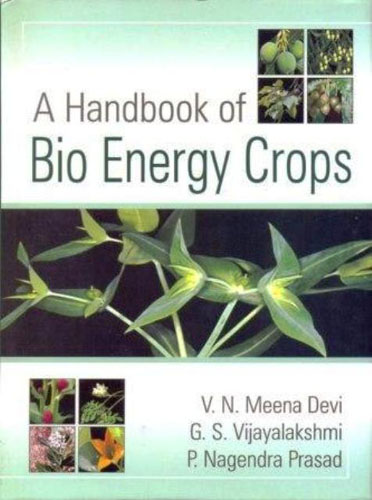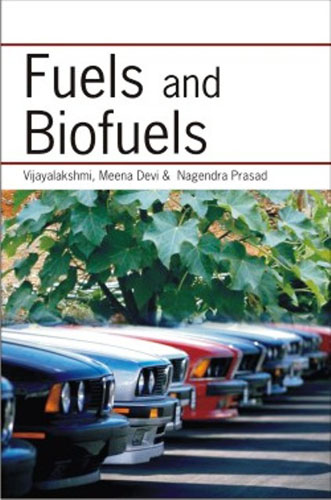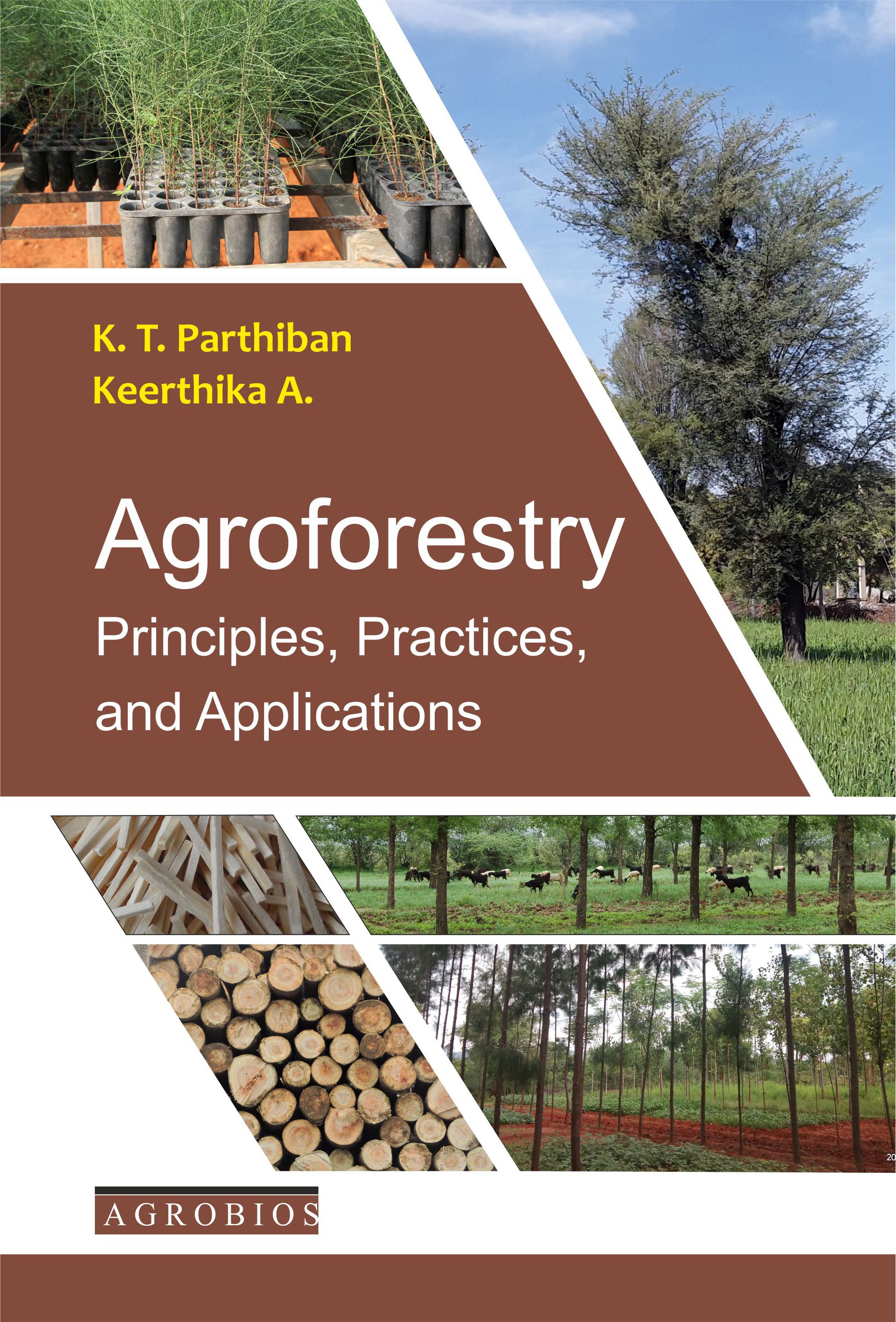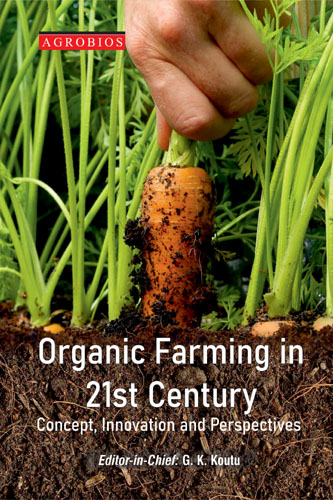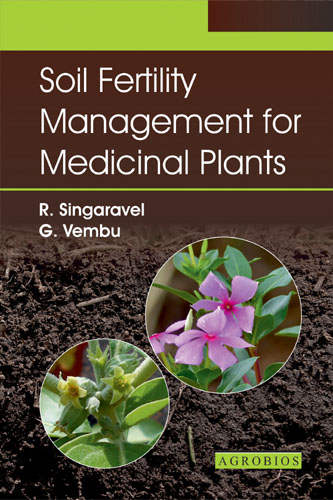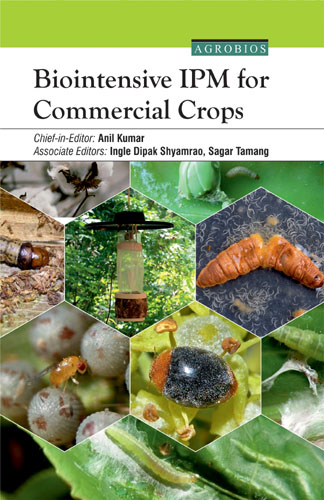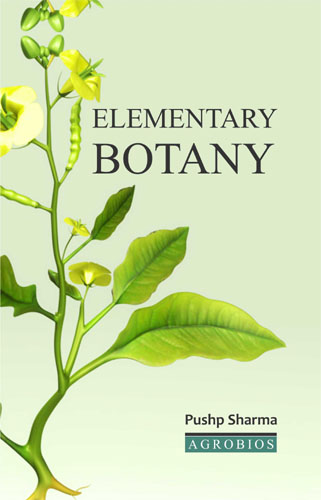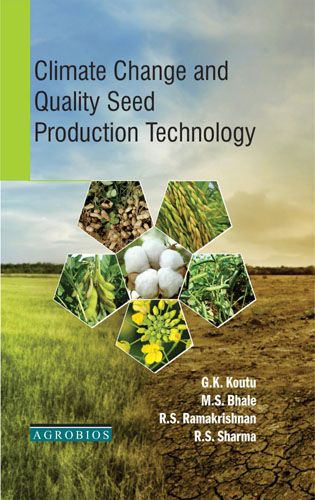A Handbook Of Bioenergy Crops
This book is done on a purpose to illustrate the different crops currently available and that could be grown as sources for food, medicine, industrial purposes and as a renewable raw material for energy. In olden days, all products used by Man were based on renewable resources. Because of the biotechnological, industrial revolution and rapid development in chemical industry during this century, most of the renewable products disappeared, or their market share was significantly reduced. Synthetic product mainly derived from non-renewable fossil fuels were cheaper, offered better material properties and more attractive to the consumer than natural products perceived as old-fashioned. Now renewable resources sources can afford a considerable market share in areas because of the development in the field of biotechnology, where they offered specific advantages.
The Botanical Survey of India has identified about 400 plants which yield vegetable oil. Among the 400 plant species 60 most potential and important sources of bio-energy crops were described in this book. The morphology of the useful parts and the various uses such as food, medicine and the various chemical constituents present in the plants are enumerated. From an agricultural point of view the possible benefits of these energy crops could provide new value-added renewable products and employment in farming and related industries. It can strengthen the economy of the country mainly in the rural areas. Regarding environment, these energy crops could enhance biodiversity by broadening the number of crop species grown in a certain area or different places according to the ecological conditions. From the economic point of view, these energy crops could contribute for the important developments and reduce the dependency on products from developing countries. It could improve the balance of payments of our country.
Now, India is facing a serious threat in fossil fuel resources as well as various concomitant environmental disasters.
The fossil resources were limited and could no longer be considered a cheap and reliable raw material. Further, consumer attitudes were changed and it was realized that many industrial products and processes could seriously damage the environment. Fossil resources could be saved for future generations, which has been an important objective of sustainable development. These energy crops could be used in multi purpose namely for energy, food, medicine and industrial uses including paints, lubrications, etc. Bio-based products have lower carbon dioxide emissions than products derived from fossil resources, will help to reduce global warming. By using and adapting natures own production, industrial processing steps could be made simpler, milder, and more environmentally.
The book is fed with the information of scientific classification, Botanical name, common names, distribution, description, ecology, yield potential, germplasm, chemical constituents, folk medicine and their different uses of bio-energy crops. According to the usage of the plant products the plants were classified into two groups namely plants with Edible vegetable oil in Section 1 and plants with Non-Edible vegetable oil in Section 2 of this book. This book will be very useful for a wide range of interested groups such as farmers, industrialists, U.G and P.G students of Science, Agri and Horticulture, Medicinal biotechnology and researchers.
Meena Devi VN
555
Table of Contents..
SECTION 1: EDIBLE VEGETABLE OILS ENERGY CROPS
Introduction
- Acrocomia aculeate (Jacq.) Lodd. Ex Mart. (Macauba Palm)
- Arachis hypogaea Linn. (Peanut)
- Avena sativa Linn. (Oats)
- Bertholletia excelsa Humb. and Bonpl. (Brazil Nut)
- Brassica alba Linn. (White Mustard)
- Brassica napus Linn. (Rapeseed)
- Camelina sativa (L.) Crantz (Gold-Of-Pleasure)
- Carthamus tinctorius Linn. (Safflower)
- Carya illinoinensis (Wangenh.) K. (Koch Pecan)
- Caryocar brasiliense Cambess (Pequi)
- Cocos nucifera Linn. (Coconut Palm)
- Coffea arabica Linn. (Coffee)
- Coriandrum sativum Linn. (Coriander)
- Corylus avellana Linn. (Hazelnut)
- Cucurbita foetidissima (Linn.) Kunth (Buffalo Gourd)
- Elaeis guineensis Jacq. (Oil Palm)
- Garcinia indica (Choicy Kokum)
- Glycine max (Linn.) Merr (Soybean)
- Guizotia abyssinica (L. F.) Cass (Niger)
- Helianthus annuus Linn. (Sunflower)
- Hibiscus cannabinus Linn. (Kenaf)
- Juglans regia Linn. (English Walnut)
- Lupinus albus Linn. (Lupine)
- Macadamia integrifolia Maiden and Betche (Macadamia Nuts)
- Mauritia flexuosa Linn. (Buriti Fruit)
- Moringa oleifera Lam. (Ben Oil)
- Olea europaea Linn. (Olive)
- Orbignya martiana Barb. Rodr. (Babassu Palm)
- Oryza sativa Linn. (Rice)
- Papaver somniferum Linn. (Opium Poppy)
- Persea americana P. Mill. (Avocado)
- Platonia insignis Mart. (Bacuri)
- Prunus armeniaca Linn. (Wild Apricot)
- Schleichera trijuga Willd. (Kusum)
- Sesamum indicum Linn. (Sesame)
- Shorea robusta Gaertner F. (Sal)
- Simarouba glauca Dc (Pradise-Tree)
- Simmondsia chinensis (Link) Schneid. (Jojoba)
- Theobroma cacao Linn. (Cacao)
- Zea mays Linn. (Corn)
SECTION 2: NON EDIBLE VEGETABLE OILS ENERGY CROPS: INTRODUCTION
- Aleurites fordii Lour. (Tung Oil Tree)
- Aleurites moluccana (Linn.) Willd. (Kukui Tree)
- Anacardium occidentale Linn. (Cashew)
- Azadirachta indica Adr. Juss (Neem)
- Calendula officinalis Linn. (Pot Marigold)
- Calophyllum inophyllum Linn. (Alexandrian Laurel)
- Calotropis gigantea (Linn.) Ait. F. (Aark)
- Cannabis sativa Linn. (Hemp)
- Copaifera langsdorfii (Linn.) Desf. (Diesel Tree)
- Crambe abyssinica (Linn) Hochst. Ex R. E. (Fries Crambe)
- Euphorbia lathyris Linn. (Gopher Plant)
- Euphorbia tirucalli Linn. (Petroleum Plant)
- Gossypium hirsutum Linn. (Cotton)
- Hevea brasiliensis (Willd. Ex Adr. Juss.) Muell. Arg. (Rubber Tree)
- Jatropha curcas Linn. (Purging Nut)
- Linum usitatissimum Linn. (Flax)
- Madhuca latifolia (J. Konig) J. F. Macbr. (Mahua)
- Pittosporum resiniferum Hemsl. (Petroleum Nut)
- Pongamia pinnata (Linn.) (Pierre pongamia)
- Ricinus communis Linn. (Castor Oil Plant)
Glossary
References
Table of Contents..
15.
18.
21.
23.
24.
29.
33.
38.
42.
52.
56.
57.
58.
60.
61.
63.
64.
68.
71.
72.
73.
Book Details
Book Title:
A Handbook Of Bioenergy Crops
A Handbook Of Bioenergy Crops
Book Type:
HANDBOOK
HANDBOOK
No Of Pages:
316
316
Color Pages :
0
0
Color Pages :
0
0
Book Size:
CROWN QUARTO (7.5X10)
CROWN QUARTO (7.5X10)
Weight:
800 Gms
800 Gms
Copyright Holder:
All Right Reserved
All Right Reserved
Imprint:
M/s AGROBIOS (INDIA)
M/s AGROBIOS (INDIA)
Readership:
ENTREPRENEURS | EXTENSION WORKERS | FIELD WORKERS | GENERAL READERS | PG STUDENTS | SCIENTISTS AND RESEARCHERS | UG STUDENTS |
ENTREPRENEURS | EXTENSION WORKERS | FIELD WORKERS | GENERAL READERS | PG STUDENTS | SCIENTISTS AND RESEARCHERS | UG STUDENTS |



